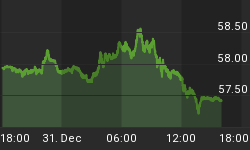Bond prices move in very long-term trends. The latest uptrend lasted for over two decades. Major trend changes take a long time as well. In the early 1980s, the change from a downtrend to an uptrend took several years. These days we see a confirmation that a major trend change is happening now, after bond prices peaked four years ago.
Long term interest rates have been rising relentlessly over the last few months. 10-year T-bond yields are now at their 11 month low. This is not an isolated U.S. occurrence. Similar events are happening worldwide: Japanese Bonds, German Bunds, etc.

Bond King and a long time bull, Bill Gross, has turned bearish on bonds. "Over the next three to five years, Pimco expects the global economy to continue to grow at a pace between 4 percent and 5 percent as well as a mild acceleration of inflation, which together are not necessarily bond-friendly," Gross said. He believes that we will see a widening spread between short term and long term interest rates, as well as 6.5% long term yields within the next 5 years.
We are sure that Bill Gross is correct in his predictions, but believe that yields much higher than 6.5% cannot be ruled out.
Implications for Gold?
Since bonds pay interest and reflect inflation expectations, it is most appropriate to compare bond yield movement to the inflation adjusted price of gold to see the real picture.

As seen in the chart above, major moves in gold are synchronized with long term bond yields, with gold typically leading the way. Huge moves in the price of gold happen at the time of rising yields and yield spreads as in the Great Bull Market of the 1970s. The bonds are now confirming the present gold bull market. Our main conclusion: this gold bull market is still as young as the bond bear market.
The bond price direction will be driven mostly by foreigners (who own a huge chunk of U.S. debt) looking for higher growth in the equity arena, often outside of the United States. Domestically, the Fed will be unable to raise interest rates due to the problems with the housing market and may, eventually, be forced to lower them. The spreads between long and short term yields should continue to rise in this environment, a very bullish development for gold.
It is not surprising that the initial reaction in gold to the breakout in the bond yields is negative. As the general stock market was overdue for a correction, gold sold off as well. This just means that we have entered into a period of a great buying opportunity which should last for the next couple of months. See our favorite gold stocks.
















